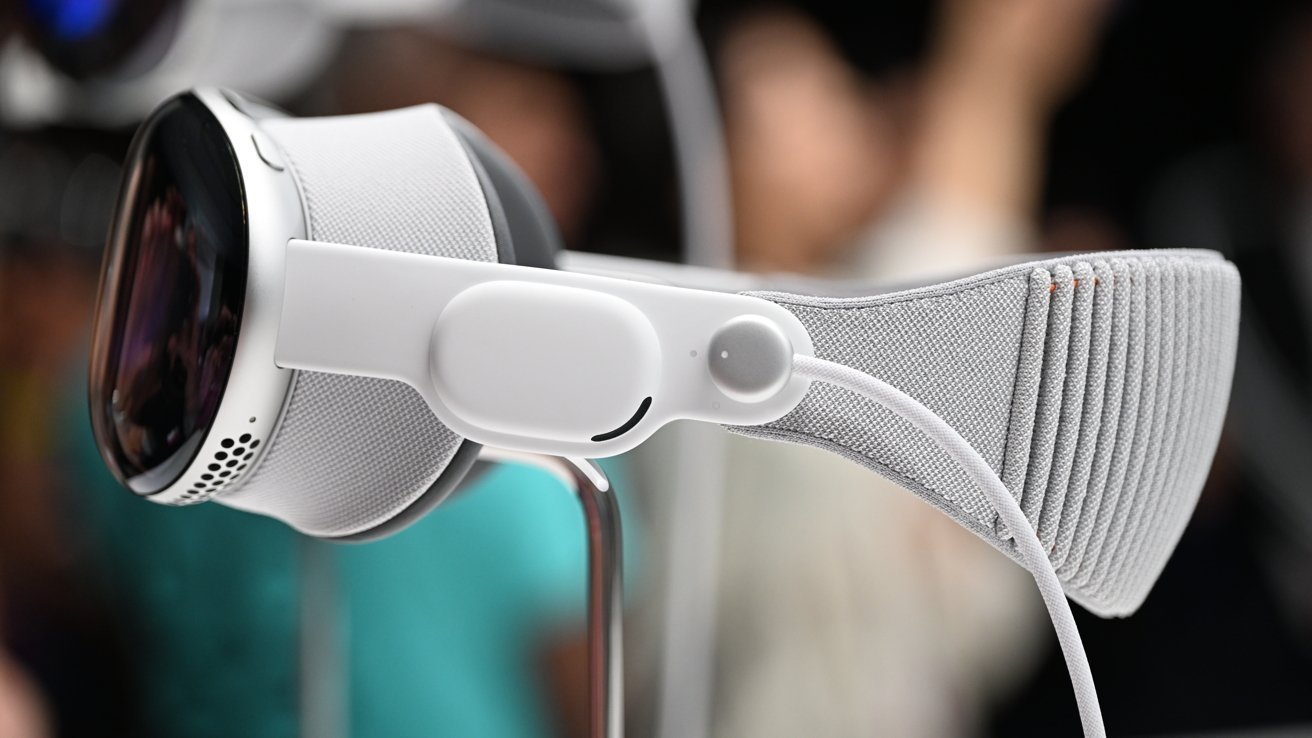Heavy Apple Vision Pro leads Apple to lighten future headsets
The weight of the Apple Vision Pro is an issue that Apple is still working on, a report claims, with future models set to become much lighter.

Apple Vision Pro
Apple's engineering teams are hard at work preparing the Apple Vision Pro for launch. Though the focus is more on future models than the already-finished first-generation hardware, Apple is still concerned about the weight of its initial release, and how consumers will take it.
Writing in the Bloomberg "Power On" newsletter, Mark Gurman says that the current model is heavy at "about a pound." This weight was apparently shown in testing to be considered "too heavy for some users - even in short stretches," and had also caused neck strain.
The weight issue was also observed by AppleInsider when it tried out the device, with "light neck fatigue" ensured after an hour and a half of use.
For the current model, Apple is considering a fix involving an over-the-head strap, which has surfaced in previous reports. Though Apple can't do much about the current model's weight, other than to try and support it more, the weight is a factor being taken onboard for later models.
As well as weight, Apple may also vary the design to make it more useful for people who wear glasses. The first-gen model was slimmed down and wouldn't work with glasses, and instead relies on magnetic prescription lenses to be installed before use.
Such a system with thousands of interchangeable lens combinations may be a logistical nightmare for future models, as well as making it complex for consumers.
Apple may opt to sell future headsets with prescription lenses pre-installed to simplify usage, but doing so would make the headset less useful for sharing with others, or if the user's vision prescription changes. There are also concerns that providing built-in prescription lenses would make Apple a form of health provider, which introduces various related problems.
Gurman offers that Apple's now-stalled plan for AR glasses could be the way forward since it would be a lightweight piece of hardware that didn't rely on passthrough cameras and VR screens. Theoretically, they could be worn all day.
Doing so will require Apple to increase its development on the AR glasses project, which it may do eventually if the Vision Pro proves popular enough.
Read on AppleInsider

Comments
I imagine that front glass with an outward-facing display adds some weight that many would be fine with dumping, but I understand why Apple wants to make it clear if you're in VR or AR when wearing them around others.
Other VR headsets are completely isolated and need you to take them off when talking to someone:
This site has a long list of VR headsets:
https://www.vr-compare.com
Apple Vision Pro is estimated to weigh around 450g. The BigScreen Beyond VR headset is a very light one at around 115g:
https://www.vr-compare.com/headset/bigscreenbeyond
I was hoping Apple's one would be more compact than this but this is just a viewer, no onboard processing. This would be like if they moved the M2 chip (and maybe R1 too) into where the battery pack was:
This probably wouldn't be possible to do because they'd need to put 12x live 4k+ 90Hz camera streams over the cable and then dual 4k 90Hz back to the displays.
Reducing Apple Vision Pro's weight will involve redesigning some of the frame, maybe thinner case material or cover glass. The frame is described as using an 'aluminum alloy':
https://www.apple.com/apple-vision-pro/
They'll have to go over every piece, every camera, sensor and try to eliminate bulk. It'll be difficult to get 50% of the weight but somewhere between 15-25% is probably doable within a couple of revisions. A different way of head mounting could help it feel less heavy too. Possibly they can change how the front display works from a lenticular lens to projection or ridged OLED display surface:
https://displaydaily.com/apple-receives-patent-for-lenticular-lens-display-technology/
Apples device will show all the strengths of being a vertical computer company, and what that can mean in terms of functionality, design, and engineering combined with an ecosystem to backup the hardware.
And yes, the second and third generations will be lighter, but the Apple Vision Pro won’t be significantly cheaper, in short it will never be under 2000 dollars.
Then you'll have a different problem: people laughing at you because you look like you're wearing an upside-down jockstrap on your face!
Overall your comment is very reminiscent of people that prematurely declared the Apple Watch a failure because nobody wanted to wear a watch any more and it was totally redundant. They could sue their phone to to tell time, make calls, send messages ....